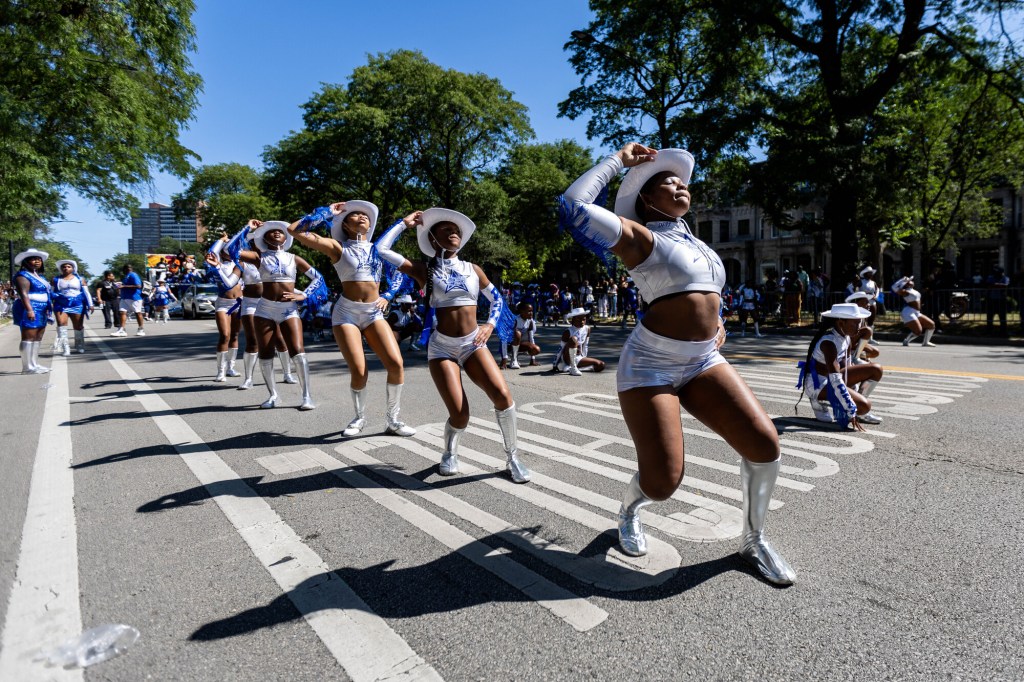For Nyla Stanton, the Bud Billiken Parade was an exciting milestone. Having started dancing just a few months ago, this was her first time performing at the parade.
Stanton, 12, is part of “Just Cause Dancers,” which does mostly hip-hop, she said. She stood with the group of dancers, clad in pirate costumes, as they prepared to perform in the parade.
Her parents, Donnie Stanton, 45, and Gini Stanton, 44, watched the Bud Billiken Parade on television every year from their home in suburban Broadview but said they didn’t know what it would be like to see it in person.
“You feel a better vibe here,” Donnie, Nyla’s father, said. “You see everybody putting everything together and making sure everything’s lined up and in order. It’s awesome.”
The Chicago Defender Charities hosted its 95th annual Bud Billiken Parade on Saturday. The event runs a three-mile route through Bronzeville, concluding with a back-to-school event in Washington Park. It’s touted as the largest African American parade in the United States and, for years, has been a place for Chicagoans to celebrate Black culture with music, food, and lots of dancing.
In 1921, Robert Sengstacke Abbott, the founder of the Chicago Defender newspaper, started Defender Junior, a page of the weekly paper geared toward children. It soon became a social club for Black children in the city, and the “Bud Billiken,” invented by Abbott and the Defender’s executive editor, Lucius Harper, became the official mascot, described as a guardian and protector of children.
The parade’s origins begin in 1924, when Robert Sengstacke Abbott, the founder of the Chicago Defender, held a picnic for several of his newsboys. In 1929, Abbott held the first official parade, meant to thank the children who sold his newspapers.
Today, the event is a tradition for many across the city, meant to kick off the next school year.
Before the start of Saturday’s parade, hundreds of children milled around with friends, practiced their dance routines, and did flips and tricks on the side of the parade route.
Members of the Kenwood Academy band warmed up their instruments, while a group of girls in sequined dresses and go-go boots prepared to perform. Floats – ranging from the Chicago Teachers Union to United Airlines and ComEd – waited for the festivities to begin.
Dion Alexander, 53, had come early to set up his grill. He’d traveled from southwest suburban South Holland, to see his granddaughter dance in the parade, and planned to have some hamburgers ready for the family and friends that had joined him.
Alexander didn’t know what to expect, but he was excited. He’d never attended the parade before.
“It’s on my bucket list,” Alexander said. “53 years old and I’ve never been to the Bud Billiken parade.”
Originally Published:
